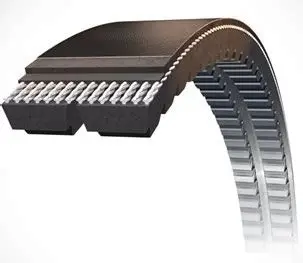Rubbex V Belts
Home > Services
Rubbex V Belts
V-Belt is a power transmission belt with a trapezoidal cross-section, designed to fit into the grooves of pulleys and efficiently transfer power between rotating shafts. Commonly used to connect electric motors to various mechanical components, V-belts are known for their compact design, excellent grip, and quiet operation. They are widely applied across industrial machinery, automotive engines, HVAC systems, agricultural equipment, and other machinery requiring reliable power transmission.
The construction of a V-belt consists of several key components. The tensile cords, made of polyester, aramid, or Kevlar, provide strength and flexibility. Cushion rubber, typically from natural or synthetic rubber, binds the cords and absorbs shocks during operation. Compression rubber, often neoprene or EPDM, maintains the belt’s shape while resisting heat and oil. Finally, a cover fabric or rubberized wrap protects the belt from wear, heat, oil, and dust.

Types of V-belts vary based on design and application. Classical or standard profiles (A, B, C, D, E) differ in width, height, and load capacity, with type A used for light industrial drives and type E for very large power transmission. Narrow V-belts (SPZ, SPA, SPB, SPC) are designed for higher power and speed in a compact form. Wedge V-belts, following DIN/ISO standards, allow for higher efficiency and smaller pulley diameters. Cogged or raw edge V-belts feature notched inner edges for better flexibility and are ideal for smaller pulleys and higher speeds. Double V-belts (AA, BB) transmit power on both sides, useful in serpentine or reverse drives. Joined or banded V-belts consist of multiple belts joined together to prevent twisting in vibrating drives. Variable speed V-belts have varying widths to work with adjustable pulleys, while Kevlar or aramid cord belts are designed for heavy shock loads, offering exceptional strength and resistance to heat and oil.
Standards and dimensions for V-belts vary by region. BS 3790 / ISO 4184 covers international specifications for classical and narrow belts, RMA/ARPM defines U.S. standards, DIN 7753 applies in Europe for wedge and narrow belts, and IS 2494 follows India’s equivalent to ISO 4184.
Applications of V-belts are extensive, including automotive systems like alternators, water pumps, and AC compressors; agricultural machinery such as tractors and harvesters; industrial uses like conveyors, compressors, blowers, and pumps; HVAC systems; and even household appliances such as washing machines and dryers.
Advantages of V-belts include high transmission efficiency, compact size, quiet operation, easy installation and alignment, a wide range of sizes and materials, and slip resistance under load. However, they also have limitations, such as susceptibility to heat and oil degradation, the need for proper tensioning, stretching over time, and unsuitability for synchronized movement—where timing belts are preferred.

